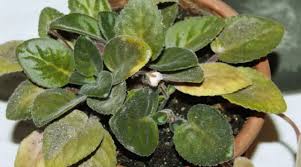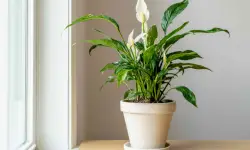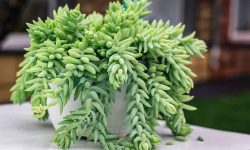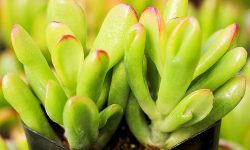African violets (Saintpaulia spp.) are beloved indoor plants known for their stunning blooms and attractive foliage. But it can be concerning to see the leaves of your African violet turning brown. Identifying the exact cause can be a daunting and challenging experience.
Brown leaves are a sign of distress or an underlying issue that needs attention. Understanding the various causes of browning leaves and implementing appropriate treatments and preventive measures is crucial for maintaining the health and beauty of your African violet.

10 Causes of African Violet Leaves Turning Brown
You might be an indoor plant enthusiast experiencing African violet leaves turning brown and brown. Here are the possible causes and their solutions:
Overwatering
It is a common cause of brown leaves in African violets. When the plant receives excessive water, the roots become waterlogged, leading to root rot. It makes the plant not absorb nutrients properly and the leaves may turn brown.
To treat overwatering, allow the soil to dry out slightly before watering again. Ensure that the pot has proper drainage to prevent water accumulation. Water the plant from the bottom by placing it in a tray of water and allowing the roots to absorb moisture.
Underwatering
Insufficient watering can also cause African violet leaves to turn brown. When the plant does not receive enough water, the leaves may wilt and eventually turn brown.
To address underwatering, water your African violet thoroughly when the top inch of soil feels dry. Water evenly around the plant until it drains out of the bottom of the pot.
Avoid letting the plant sit in standing water as this can lead to root rot. Schedule a strict watering routine to avoid issues related to overwatering and underwatering.
Improper Lighting
Incorrect lighting conditions can cause African violet leaves to turn brown. Insufficient light results in weak growth and pale leaves, while excessive light can scorch the leaves, causing them to turn brown.
Place your African violet in a location that receives bright, indirect light. A north or east-facing window is usually ideal. If the light is too intense, filter it with sheer curtains or move the plant a few feet away from the window.
Adjust the plant’s position as needed to ensure it receives the right amount of light. Even light distribution will foster healthy growth and well-being.
Water Exposure
Direct exposure to water droplets on the leaves can cause browning. Water acts as a magnifying glass, intensifying sunlight and leading to leaf burn.
To prevent water exposure, water your African violet at the base, avoiding getting the leaves wet. Use a watering can or a narrow-spout watering device to direct the water to the soil without splashing the foliage.
Poor Nutrition
Inadequate nutrition can result in brown leaves in African violets. When the plant lacks essential nutrients, such as nitrogen, it may exhibit signs of nutrient deficiency, including leaf browning.
Use a balanced fertilizer specifically formulated for African violets, following the package instructions for dosage and frequency. Dilute the fertilizer before applying it around your indoor plant.
Fertilize your African violet once a month during the growing season to provide the necessary nutrients for healthy foliage. Spring and summer are the growing seasons for African violet plants.
Pest Infestation
Pests like aphids, spider mites, and mealybugs can infest African violets, causing stress and browning of leaves. Inspect your plant regularly for signs of pests, such as tiny insects, webbing, or sticky residue on the leaves.
If pests are present, treat the infestation with appropriate measures. Use organic insecticidal soap, neem oil, or chemical insecticides labeled for use on African violets. Follow the product instructions carefully to effectively eliminate the pests.
Natural Aging
As African violet leaves age, they naturally turn yellow and eventually brown. This is a normal part of the plant’s life cycle.
To maintain the plant’s appearance, remove the brown leaves regularly. Gently pinch off the discolored leaves close to the stem using clean and sharp scissors or your fingers.
By removing the aging leaves, you allow the plant to redirect its energy toward producing new, healthy foliage. It will also promote lush leaves and the growth of vibrant blooms.
Crowded Roots
African violets can become root-bound when their roots outgrow the pot over time. Crowded roots restrict nutrient uptake, leading to browning leaves.
To address this issue, repot your African violet in a slightly larger container every 12 to 18 months. Choose a pot with drainage holes and use a well-draining soil mix specifically formulated for African violets.
Carefully remove the plant from its current pot, gently loosen the roots, and place it in the new pot with fresh soil, ensuring the roots are spread out comfortably.
Bad Air Circulation
Insufficient air circulation around African violets can contribute to leaf browning. Stagnant air promotes fungal growth and limits transpiration, leading to leaf damage.
Ensure proper ventilation around the plant by placing it in a well-ventilated area. You can also use a small fan set on low to improve air movement. Avoid placing the plant near drafts or in excessively humid areas.
Low Indoor Humidity
African violets thrive in moderate to high humidity levels. Low indoor humidity can cause the leaves to dry out and turn brown at the edges. Increase humidity around the plant by placing a tray of water near it or using a humidifier.
You can also create a humidity tray by filling a shallow tray with water and placing pebbles in it. Set the pot on top of the pebbles, ensuring that the water does not touch the bottom of the pot. As the water evaporates, it will increase the humidity immediately surrounding the plant.
Final Thoughts From Experts
When African violet leaves turn brown, it’s crucial to identify the underlying cause and take appropriate measures to address it. Avoid overwatering or underwatering, provide adequate lighting, protect leaves from water exposure, ensure proper nutrition through fertilization, and promptly address pest infestations.
Pay attention to factors such as root crowding, air circulation, and indoor humidity to create a favorable environment for your African violets. By implementing these preventive measures and providing consistent care, you can enjoy the vibrant beauty of your African violets with lush green leaves.
People Who Read This Also Read:
- African Violet Leaves Falling Off (Causes & Solutions)
- African Violet Leaves Drooping (Causes & Solutions)
- African Violet Leaves Curling (Causes & Solutions)
- African Violet Leaves Turning Yellow (Causes & Solutions)
- How to Care for African Violets Indoors
- Brown Spots on African Violet Leaves (Causes & Solutions)
- African Violet Not Flowering (Causes & Solutions)






